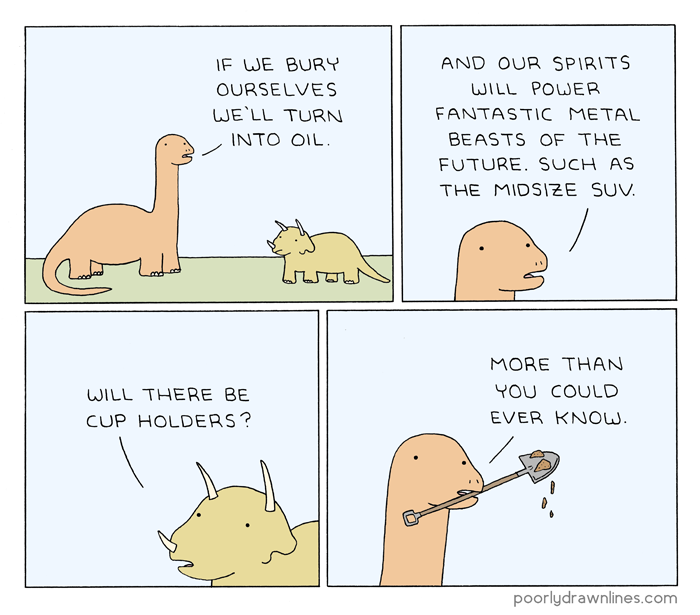
Simple Simon
Shared posts
Identification Chart
Simple SimonPlane geekdom.
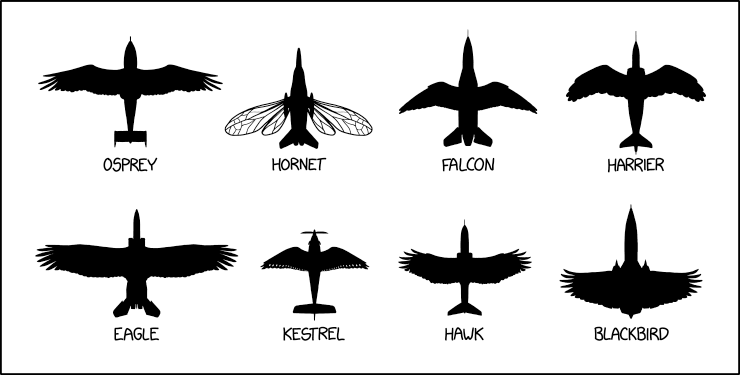
Tesla is worth more than General Motors or Ford
Simple SimonMany of these guys in France? THOUSANDS in Norway.
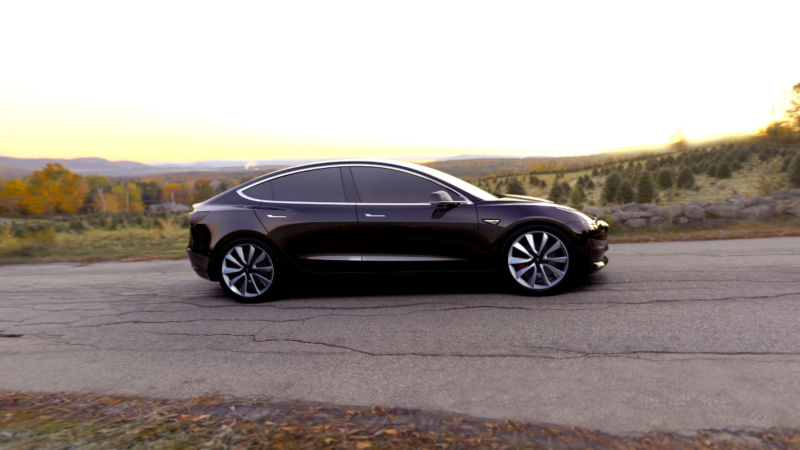
Enlarge / The Tesla Model 3. It's going to sell in massive volumes compared to the company's existing range, but will they make much money? Investors certainly think so. (credit: Tesla)
Props to Elon Musk and the people at Tesla. The company may rarely be profitable, and it is yet to sell enough electric vehicles to trigger the end of its federal tax incentive, but according to Wall Street, it's the most valuable car maker in the US. Last week, Tesla overtook first Ford and then General Motors as its share price edged above $300 a share. At the time of writing, Tesla's stock price was $311.5, which means the company is worth $51.4 billion (£41.4 billion).
By contrast, General Motors—which sold roughly 20 times the number of vehicles during Q1 2017—is worth a mere $50.3 billion. Ford, which also delivered more than half a million vehicles in Q1, is worth just $45 billion. If that sounds bonkers, you haven't heard anything yet. Some analysts are predicting that Tesla could hit $500 a share.
I must admit, I'm a little puzzled. For as clever as Tesla's vehicles are, the EV market as a whole makes but a minuscule fraction of overall car sales. And the company still needs to deliver on the massive hype surrounding the forthcoming Model 3. That car is currently at the "release candidate" stage, and Tesla is not planning on building the usual beta prototypes before putting the car into production, possibly in an effort to make sure deliveries start later this year as promised.
Microsoft Word 0-day used to push dangerous Dridex malware on millions

Enlarge / A sample e-mail from Dridex campaign exploiting Microsoft Word zero-day. (credit: Proofpoint)
Booby-trapped documents exploiting a critical zero-day vulnerability in Microsoft Word have been sent to millions of people around the world in a blitz aimed at installing Dridex, currently one of the most dangerous bank fraud threats on the Internet.
As Ars reported on Saturday, the vulnerability is notable because it bypasses exploit mitigations built into Windows, doesn't require targets to enable macros, and works even against Windows 10, which is widely considered Microsoft's most secure operating system ever. The flaw is known to affect most or all Windows versions of Word, but so far no one has ruled out that exploits might also be possible against Mac versions. Researchers from security firms McAfee and FireEye warned that the malicious Word documents are being attached to e-mails but didn't reveal the scope or ultimate objective of the campaign.
In a blog post published Monday night, researchers from Proofpoint filled in some of the missing details, saying the exploit documents were sent to millions of recipients across numerous organizations that were primarily located in Australia. Proofpoint researchers wrote:
Scientists capture video of dolphins risking death to eat octopus

Bottlenose dolphins are known for problem-solving when it comes to hunting difficult prey. Previously, researchers have seen the dolphins protecting their soft snouts with sponges while digging in the seafloor for fish. Octopus hunting requires other skills, however. First, the octopus has to be disarmed—literally. And then those arms have to be bashed into submission. Those who do not learn this trick are likely to die. In a paper published recently in Marine Mammal Science, Murdoch University marine biologist Kate R. Sprogis and colleagues report that they've come across two dolphins killed while trying to eat octopuses:
It is apparent that octopus handling is a risky behavior, as within our study area a known adult male stranded and a necropsy confirmed the cause of death was from suffocation from a large 2.1 kg octopus. The dolphin had attempted to swallow the octopus, however, the octopus was found almost intact, with the head and the mantle of the octopus in the dolphin's stomach and the 1.3 m long arms separated from the head and extending out of its mouth. Similarly, another [bottlenose dolphin] died from suspected asphyxiation due to an octopus lodged in its mouth and pharynx.
Essentially, the octopuses' tentacles keep fighting, blocking the dolphins' airways, even after most of their bodies have been swallowed. It's a terrifying way to die, but Sprogis and the researchers observe that octopuses must be such valuable prey that they are worth it. Over seven years of observation, she and her team watched 33 dolphins "handling" octopuses in ways that made them meal-ready. Typically, the encounter would start with the dolphin biting the octopus' head off, followed by tossing the legs into the air so that they smack hard into the water over and over. Dolphins would execute the grab-and-toss move about 10-15 times before they were satisfied.
Potent LastPass exploit underscores the dark side of password managers

(credit: Wikimedia)
Developers of the widely used LastPass password manager are scrambling to fix a serious vulnerability that makes it possible for malicious websites to steal user passcodes and in some cases execute malicious code on computers running the program.
The flaw, which affects the latest version of the LastPass browser extension, was briefly described on Saturday by Tavis Ormandy, a researcher with Google's Project Zero vulnerability reporting team. When people have the LastPass binary running, the vulnerability allows malicious websites to execute code of their choice. Even when the binary isn't present, the flaw can be exploited in a way that lets malicious sites steal passwords from the protected LastPass vault. Ormandy said he developed a proof-of-concept exploit and sent it to LastPass officials. Developers now have three months to patch the hole before Project Zero discloses technical details.
"It will take a long time to fix this properly," Ormandy said. "It's a major architectural problem. They have 90 days, no need to scramble!"
Astro-landscape time lapse photography
Simple SimonI love a good time-lapse! The orange lasers are very compelling!
Astro-landscape time lapse photography by Jason Chu (Facebook | 500px | Instagram)
Greetings [NR] readers, my name is Jason Chu (otherwise known as “theinfinitypoint” on Disqus) and I’ve been a reader of Nikon Rumors for a very long time. Today I want to share with everyone some of the work I’ve created with my Nikon cameras, specifically my astro-landscape time lapse videos shot at astronomical observatories (videos are below). Being a Hawai`i-based astronomer, I have special access to the world’s leading ground-based observatories on the mountain of Mauna Kea on the Big Island of Hawai`i. While I would love to discuss my astronomical research and what sort of data we collect, use, and analyze, that would make this post too long!

Panoramic photo of Mauna Kea at sunset as seen from neighboring volcano Mauna Loa, showing its gradual slopes, and the clouds far below its summit. The shadow of Mauna Kea can be seen rising on the very right side. Side note: I have many, many, many more awesome photos of Mauna Kea that I’d love to show, but I’ll have to defer them to a future guest post 
A brief background on astronomy in Hawai`i, the Mauna Kea Observatories is a collection of about 12 telescopes situated 13,796 feet above sea level. A gentle mountainside with thousands of miles of open ocean around it means that the air flowing over the island is very laminar (technical word for smooth), and so it provides the best conditions for observing the night skies. In addition, the high altitude of the observatories means that sits above most of the water vapor (and thus tropical weather) in the Earth’s atmosphere. Combining these two conditions, along with the fact that there’s very little light pollution (again we’re in the middle of the ocean), make it the ideal site to observe the heavens. For this reason, the mountain hosts some of the largest telescopes in the world, with primary mirror diameters between 8-10 meters.
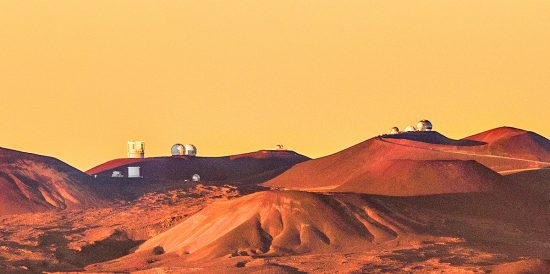
Crop from the previous panorama showing most of the telescopes on Mauna Kea, as seen from Mauna Loa.
Although a lot of astronomical observations can now be done remotely over the internet (indeed people literally half way around the world have done remote observations from Mauna Kea), some telescopes still allow, or require observers to physically travel to the telescope for the observations. Since I live so close to them, I often travel up the mountain to use the telescopes for my research. And when I do go, I always bring all of my photo gear for my own “observations” as well.
I originally got into time lapses because I was trying to create star trail images using back-to-back exposures, but then I realized I can make time lapse movies out of the data (photos) as a secondary product (always a good thing if one does that in science!). Shooting time lapse on Mauna Kea can be extremely challenging and intense: Not only do I have to plan the shot taking into account sunset/sunrise times and the moon phase, but I also have to contend with the temperature (average 0 C at night), and weather conditions such as snow (yes, it snows in Hawai`i!), fog, ice on the ground, and high winds (up to 60 MPH or more!). Add to that the effects of high altitude on the body (60% of the oxygen at sea level) and fatigue from staying up all night, makes it extremely challenging when doing photography on the mountain. The low oxygen can even interfere with one’s ability to make decisions, another hazard from working at high altitude.
As far as my gear goes, almost all of it is Nikon. Although my gear has evolved throughout the years, my current bodies include: D800, D750, D700, D7000, and a D5000 if I really needed it. All of my bodies are equipped with battery grips to enable long shoots at freezing temperatures. I typically shoot multiple sequences simultaneously during the night which is why I usually bring 2 backpacks full of gear up with me plus tripods. As far as lenses go, my go-to lenses are my 14-24mm f/2.8G (two of them actually), 20mm f/1.8G, 28-70mm f/2.8D, 24-70mm f/2.8G, 85mm f/1.8G (for shots of individual telescopes), and a Rokinon 16mm f/2 for DX. I’ve also used my Nikon 55mm f/1.2 pre-AI lens on my D5000 once as well (at f/2), so older 1970s optics still work! I’ve also borrowed the 17-35 f/2.8D and a 16mm f/2.8D fisheye when needed. I’m thinking of eventually getting the Nikon 105 f/1.4E lens, since it is sharp wide open and controls sagittal coma flare quite well (not to mention bokeh for my portrait shoots!). As with any night shoots, tripods are a must, and I now have 3 Manfrotto tripods that I use, plus borrowing some from friends. All of them are aluminum, since carbon fiber is quite light and can easily blow over or vibrate in 20+ MPH winds (which happened to a fellow photographer). Obviously stability is important when shooting time lapse, otherwise one would get jitters (camera shake) in the final video.
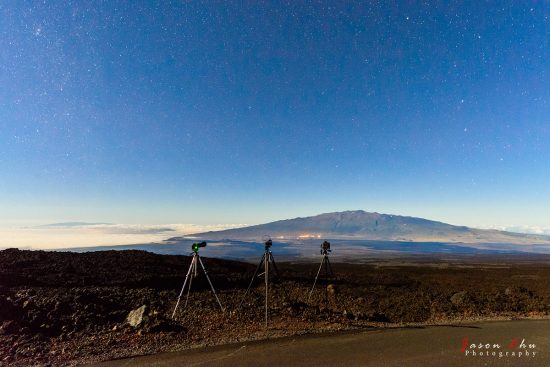
Shooting Mauna Kea from Mauna Loa in the moonlight. The right camera is a time lapse I shot at 500mm of the observatories on the summit of Mauna Kea. In the center I was shooting a star trail shot using a Nikon FE with the 28-70mm f/2.8D lens. On the right is another time lapse shooting at 85mm.
Planning out time lapse shots can sometimes be as easy as deciding on the spot, and other times requiring extensive planning months in advance. Many of my shots are timed to coincide with astronomical objects rising or setting, such as the Milky Way, the Andromeda Galaxy, planets, Polaris, and of course the Sun and Moon. To that end I use Google Earth extensively for terrestrial planning, combined with Stellarium (a free computer-based planetarium software) for the sky. Occasionally I use The Photographer’s Ephemeris as well to help plan for sun and moon rise and set related shots.
Apart from capturing natural events, a lot of my planning is also done around telescope activity. One of my favorites, and one that is seen in a lot of my shots, are orange lasers emanating from some of the telescopes. Simply speaking, these lasers are used by the telescope’s adaptive optics system to correct the image distortion caused by an atmosphere in constant movement, giving astronomers Hubble-quality images from the ground. Photographically speaking they are super cool and awesome to capture, and in fact most of them are bright enough to be seen with the naked eye, especially if the Moon is not out.
One of my most exciting projects was to shoot from the inside of the WM Keck Observatory on a laser night. This observatory has two identical telescopes both 10 meters wide, and both equipped with the brightest lasers on the mountain. I knew ahead of time that on this particular night the observer would be using both telescopes and lasers on the center of the Milky Way. It took 1 year of getting all the permits and satisfying all of the safety regulations before I was able to shoot it. In the end I had a personal record of 8 cameras simultaneous running time lapses all from different angles inside and outside the telescope. In some of my other shoots, an observatory director has also given me permission to shoot from the catwalk from one of the telescopes.
Shooting the actual time lapses can take a very long time, since by definition a time lapse compresses the passage of hours to only 20-30 seconds in the final video. While doing night time lapses on Mauna Kea, each individual frame usually has an exposure time of around 15-30 seconds at f/2.8 or faster if possible. To truly capture the very dark scene, my ISO is usually at 6400 unless the moon is near the full phase, in which case I’ve gone down to ISO 1600 at times. One other area of concern is field rotation: since the sky is turning (due to earth’s rotation about its axis), the stars will appear to move, the amount of trailing depending on the focal length and shutter speed (and also where the camera is pointed in the sky). This is another reason why (ultra)-wide angle lenses are useful – longer exposures are possible which means less noise in the final frames. This is also why my 85mm f/1.8G lens is useful, the extra 4/3 stop gain in aperture over an f/2.8 lens compensates for the shutter speed enough so that stars don’t trail as much in the final image.
In some of my shots, I also use a Cinetics panning motor, which allows me to create panning time lapse sequences. Despite some small quirks (the requirement that the camera be in bulb mode, which makes day/night transitions more difficult when I need to manually control exposure ramping), this is one of my favorite tools I use to introduce some dynamism in my shots.
A short behind-the-scene video of me explaining how I set up a panning time lapse:
As with any sort of landscape shoot, weather can sometimes become a problem. In cases where precipitation is likely or the winds are high and lots of dust is being blown around, I wrap my camera in a plastic bag (the kind you put vegetables in in the grocery store), cut a hole for the lens, then use a rubber band or tape to hold the bag in place. I then screw the tripod plate through the plastic bag to mount it on my tripod. However there were a few times my camera got thoroughly wet from condensation, but thanks to Nikon engineering (or luck) I never got any issues.
A typical time lapse sequence is anywhere between 400-800 individual frames, fired using the built-in intervalometer on the body. I always shoot in raw which gives me a wide post-processing latitude, which is especially useful for shadow recovery in dark scenes. On a typical night I produce around 40-70 GB of data, which I offload onto my laptop and another external drive for immediate data protection/redundancy. When I return to my lodging in the morning, my room is usually covered with battery chargers everywhere. In fact I always bring a power strip just so that I can parallelize all the recharging.
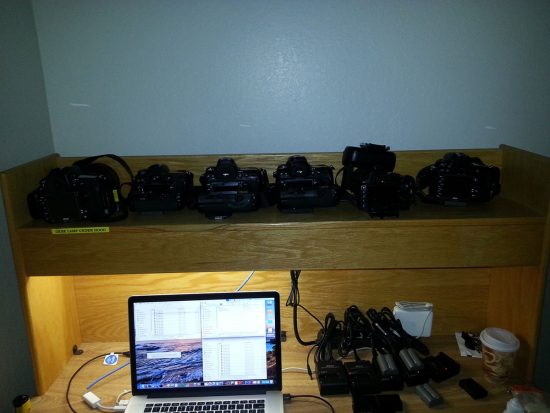
All of my cameras and their battery grips on the shelf back in my room. On the lower left I am recharging all of the batteries for the next night.
In the 5 years I’ve been going up the mountain, I’ve racked up a total of 66,004 time lapse frames (not counting the very few that completely failed), shot over a total of 520.4 hours on the mountain. Played back at 24 FPS this corresponds about 46 minutes of footage. Below are two of my most recent time lapse videos of Mauna Kea, with more on my youtube channel (feel free to subscribe), including non-astronomy ones. If you have any questions feel free to ask below, I’ll do my best to answer them all. Thanks for reading, and I sincerely hope you enjoy my work!
Related posts:
Concrete Gravity Structures – Offshore Structure Series
Simple SimonThe Troll A image is impressive - My dad had some involvement in that.
As the name suggests, the concrete gravity structure is reliant on its own weight, and the capability of the seabed to maintain that weight, in order to remain stable. They are designed particularly with storm conditions in mind. Like other types of structure, they come in multiple design variations, and may be made out of concrete, steel, or a combination of the two. Concrete gravity structures were first used in the Ekofisk Field off Norway, although the design principle had previously been used in lighthouse construction. The Ekofisk structure, which had originally only been intended for oil storage but was then modified for use as a large gas handling and compression plant, was soon followed up with the construction of multiple additional drilling and production concrete gravity structures made from reinforced concrete. Given the huge demand placed on onshore prefabrication sites, and the significance of the water depths available to constructors for fabricating and towing these structures near to the shore, there has been a wide variety of different gravity designs, despite being constrained by the conditions of the construction site. It has been impossible to create an optimized design which is suitable to be built at all available sites.
The concrete gravity structure is built in a tapered shape, with as much of the mass and bulk concentrated as close as possible to the seabed. Ideally, the platform is constructed close to the shore, and the topside facilities are placed in a sheltered site before the offshore tow begins. Then, the whole thing is moved to its final location through the use of ocean-going tugs. This is done as much as possible using a multi-celled caisson raft, which can measure up to 100 meters high and 60 meters wide. From this raft base, a number of columns will be carried up to the full height of the structure. When the raft reaches the offshore location, the caisson is water ballasted and landed on the sea bed, Offshore installation can therefore take as little as a few days, which is certainly an advantage in harsh areas which have short fair weather periods. Concrete gravity structures can be used in water depths up to 160 meters and with weights of over 300,000 tonnes.
Examples of concrete gravity structures – Ninian Central Platform
Figure 1 demonstrates Ninian Central platform, a large concrete tower with a series of tanks around the base. These concrete fixed platforms are able to store fluids, and can also be attached to export lines, which gives them a significant advantage over steel jacket platforms. Jacket platforms generally lack tanks, although they can be built on deck, which means that their export can be entirely lost if a tanker does not stick to its strict schedule. Concrete platforms also do not need to be secured to the seabed. Thanks to skirts around the concrete, erosion is prevented. Concrete platforms perform exactly the same function as steel jacket platforms, with only the support structure being different.

Figure 1 – Ninian Central platform
Figure 2 shows the Ninian Central platform in bad weather, with only the top being visible. The accommodation block and satellite dishes can be seen on the left of the structure, as can several lifeboats. Since the Piper Alpha disaster, lifeboat stations are almost always located near the accommodation block. Ninian Central is a concrete monotower, weighing between 500 and 750 tonnes.

Figure 2 – Ninian Central platform on bad weather day
Condeep
Figure 3 demonstrates a large concrete fixed platform being built in a Norwegian fjord. This type of structure is known as a condeep. Tanks are built around the base of a concrete structure, which are used for sinking the platform when it is in its final position, and can then be used as storage tanks for produced reservoir fluids.

Figure 3 – Condeep
Modern Concrete Gravity Platforms
Figure 4 shows another significant advantage of concrete fixed platforms over steel jacket platforms. The main concrete structure can be built in the fjord, and then ballasted down to allow the mating of the main deck. This deck can then be built entirely onshore, before being sailed out to the concrete structure and attached. This is simply not possible with a steel structure. This picture shows a fairly typical modern platform. The accommodation block is the white structure on the far left, while the processing equipment is located on the opposite side for safety reasons.
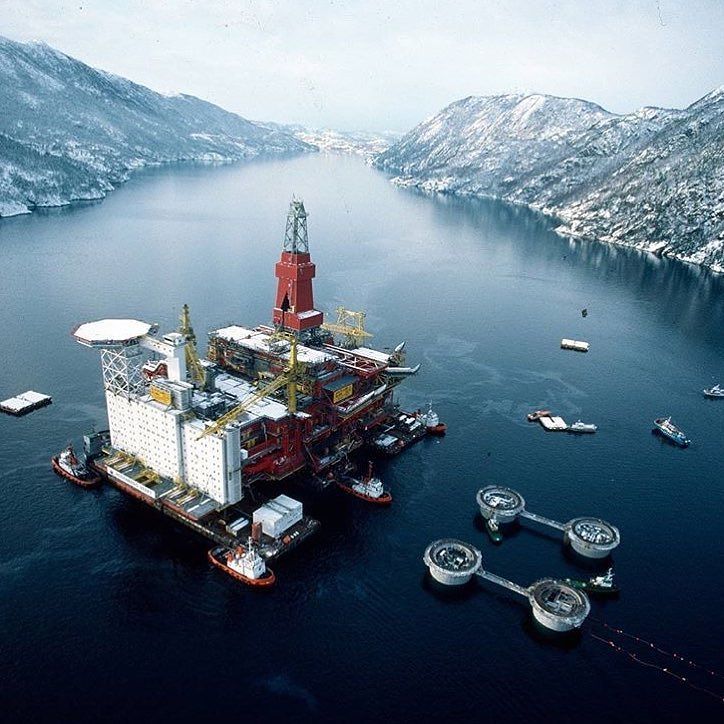
Figure 4 – Modern Concrete Platform
Horsepower Requirement to Move a Platform
Figure 5 shows the vast amount of horsepower needed to move Troll A concrete platform with surface structure attached to its field location. The superstructure weighs around 25,000-30,000 tonnes, along with a jacket weight of 400,000 tonnes. Approximately 300,000 horsepower is therefore required to adequately tow and steer the structure.

Figure 5 – Troll-A Platform Under Tow.
Brent Field
Figure 6 shows the Brent field in the Central North Sea, one of the original Shell fields. For the Brent field, one piled structure and three concrete gravity platforms were utilized for the field development. The platforms in this field are all close together, because technology limitations at the time meant each reservoir needed its own platform. Were Shell to build this field now, there would be no need for the four platforms. Thanks to modern subsea technology and extended reach drilling, the reservoir fluids could all be brought back to a single location for processing.

Figure 6 – Brent Field in Central North Sea (Courtesy of Shell)
References
Bai, Y. and Bai, Q. (eds.) (2012) Subsea engineering handbook. Waltham, MA: Gulf Professional Publishing.
Bennett, M. (2015) Gearing up for the big lift in the north sea. Available at: http://www.bbc.com/news/uk-scotland-scotland-business-32844552 (Accessed: 25 January 2017).
Bygging-Uddemann (2015) Outstanding projects – bygging. Available at: http://www.bygging-uddemann.se/outstanding-projects/ (Accessed: 25 January 2017).
Devereux, S. (2011) Drilling technology in nontechnical language. Tulsa, OK: PennWell Corp.
Kaushik (2013) Troll-A platform: Largest object ever moved by man. Available at: http://www.amusingplanet.com/2013/03/troll-platform-largest-object-ever.html (Accessed: 25 January 2017).
Oilandgaspeople.com (2015) Production shut down on CNR north sea Ninian central – oil and gas news. Available at: https://www.oilandgaspeople.com/news/5842/production-shut-down-on-cnr-north-sea-ninian-central/ (Accessed: 25 January 2017).
Shell UK (2012) Brent Field Platonisms Available at: http://www.shell.co.uk/sustainability/decommissioning/brent-field-decommissioning/the-brent-story/_jcr_content/par/gallery/mediaplayer/image.img.800.jpeg/1480930096328/brent-field-cgi-highres.jpeg (Accessed: 22 January 2017).
Wikiwand. (no date) Slip forming. Available at: http://www.wikiwand.com/en/Slip_forming (Accessed: 25 January 2017).
Mountaineers in training

Participants looked at the Lomnicki Peak during a training session for mountaineers in the High Tatras, from a window of the Tery Odon shelter in Slovakia, on March 1. The course is designed to learn essential climbing skills and practices during the winter season. To become a professional climber, the applicants have to fulfill the basic climbing course in the summer and winter alpine courses. (Balazs Mohai/EPA)
Borrow Your Laptop
Simple SimonI did this with my camera - changed the focus button to a button on the back, made it virtually impossible for anyone else to take a nice shot with it at the weekend.

Finally, live TV made for you
There’s no question that people love TV, from live sports to breaking news to sitcoms and dramas. But the truth is, there are a lot of limitations in how to watch TV today. Unlike online video, people can't watch TV when they want, on any screen and on their terms, without commitments. Consumers have made it clear that they want live TV without all the hassle. They don’t want to worry about their DVR filling up. They don't want to miss a great game or their favorite show because they’re on the go. They tell us they want TV to be more like YouTube.
Well, we’ve got some good news! We’re bringing the best of the YouTube experience to live TV. To do this, we’ve worked closely with our network and affiliate partners to evolve TV for the way we watch today.
Meet YouTube TV. It’s live TV designed for the YouTube generation—those who want to watch what they want, when they want, how they want, without commitments.
Here’s what YouTube TV offers:
-
Live TV streaming from ABC, CBS, FOX, NBC, ESPN, regional sports networks and dozens of popular cable networks. YouTube TV gives you the best of live TV, from must-see broadcast shows like “Empire,” “The Voice,” “The Big Bang Theory” and “Scandal,” to the live sports you want. YouTube TV includes major sports networks like ESPN and regional sports networks like Fox Sports Networks and Comcast SportsNet, so you can watch your favorite NBA or MLB teams. We’ve also partnered with local TV stations, so you’ll also get sports and local news based on where you live. And YouTube TV offers dozens of additional cable channels, so you won’t miss out on the latest news from MSNBC or Fox News, popular shows and movies from USA or FX, kids programming from the Disney Channel or Sprout, or reality TV from E! or Bravo. You can also add Showtime, or Fox Soccer Plus to your networks for an additional charge. In total, YouTube TV gives you access to more than 40 networks, listed below.
-
A cloud DVR, with no storage limits. With YouTube TV, you’ll be able to record live TV and never run out of storage. Your cloud DVR can record as many shows as you want, simultaneously, without using precious data or space on your phone and we’ll store each of your recordings for nine months.
-
A service that works great on all your screens. You can watch YouTube TV on any screen—mobile, tablet or computer—and you can easily stream to your TV with a Google Chromecast or Chromecast built-in TV. YouTube TV works on both Android and iOS. And your cloud DVR goes with you, so you can stream your recordings on any device, whenever and wherever you want.
-
YouTube Red Originals. With a YouTube TV membership, you can watch all of our YouTube Red Original series and movies right on the new YouTube TV app.
-
Six accounts, one price. Every YouTube TV membership comes with six accounts, each with its own unique recommendations and personal DVR with no storage limits. You can watch up to three concurrent streams at a time.
-
Half the cost of cable with zero commitments. A YouTube TV membership is only $35 a month and there are no commitments—you can cancel anytime.
YouTube TV will be available soon in the largest U.S. markets and will quickly expand to cover more cities across the country. Visit tv.youtube.com and sign up to find out when we’ll launch in your market.
With so much great content available on TV, we’re thrilled to build an experience that lets you enjoy it as easily as you watch YouTube. We can't wait for you to tune in.
Cathay Pacific Introduce ‘Betsy’ A Beer Designed For 35,000ft
Simple SimonAn interesting one to try

Cathay Pacific may not be known as a distillery per-se, but the airline has rolled out its first beer, specially crafted for pressurised cabins. Named after “Betsy”, Cathay Pacific’s first aircraft, a Douglas DC-3 which flew passengers around the region in the 1940s and 1950s, Betsy Beer will be first served to First and Business Class passengers onboard flights between Hong Kong and destinations in the United Kingdom – Heathrow, Gatwick and Manchester – from 1 March until 30 April 2017.

The bottle, which features labels adorned with the DC-3, includes “Dragon Eye” fruit – a unique characteristic of the beverage. Known for its aromatic properties, the fruit adds to the round, rich, textural properties that make the beer distinctive. This flavour is enhanced further by the inclusion of a small component of New Territories’-sourced honey in the brewing process, giving the beer lighter floral notes, while the use of Fuggle, a revered hop and a mainstay of traditional British craft ales, lends it a pleasingly earthy and full-bodied flavour.

Many people will know that cabin pressure and altitude affects passengers’ taste buds, (one of the reasons airlines sometimes serve different Champagnes on the ground and in the sky) but by using a combination of science and traditional brewing methods, Betsy Beer, which Cathay Pacific has produced in harness with Hong Kong Beer Co, is created with a combination of Hong Kong and UK-sourced ingredients, aroma and necessary carbonation to taste great both in the air and on the ground.

In addition to Cathay Pacific flights to and from the UK, Betsy Beer will be available in the airline’s lounges in Hong Kong and Heathrow as well as a select number of Swire-owned restaurants in Hong Kong for a limited time.
Rockin n Rollin’ in Hurrah-kin on the IMBA Epic Rim Loop
Simple SimonWould like to go here - not necessarily for MTB, but Utah is a big geological dream destination for Anna, and the photography seems nae bad either.
Hurricane is not HURRUHCANE it’s HURRAH-KIN. Spend any amount of time in Utah and you’ll quickly learn that. After our exceptional romp in St. Geezy, we loaded up our Yotas with our bikes and drove an hour to Hurricane, home to arguably the best trails in Southwestern Utah. We had a few days to explore with not a lot on the agenda, other than Gooseberry Mesa and the IMBA Epic Rim Trail. IMBA Epics are just as they sound, epic rides categorized by IMBA. It’s not often you come across one of these treks, so when you do, you’d better do your best to ride it.

Once we decided on a campsite – there’s tons of free, dispersed camping in the area, just make sure you pack it in and pack it out – we unloaded our trucks, tuned up the bikes and cooked a meager dinner. Our rough plan was to awake with the sun as it rose over the pastel-colored mesas and take off to the Hurricane Rim Loop.

Mornings in Utah this time of year are cold, making early starts very difficult. Even crawling out of the roof top tent was particularly difficult that morning as a eagle’s call screeched through the Virgin River Valley below. Everything had a layer of frost covering it, even the coolers had a plane of thin ice encapsulating their tops. Coffee. Breakfast tacos and yes, some bourbon warmed spirits and body temperatures. A little chain lube later and we were ready to roll.

Camping close to the trails is key and in Utah, it’s almost always a possibility. Most of these trails are on public land, so finding a secluded area to set up for the night is easy. Ours happened to be close to the start of the Hurricane Rim Loop, so we took off towards the singletrack.

Now, this loop is composed of the Hurricane Rim Trail, the Goulds Rim Trail and JEM, along with one potentially sketchy, quarter mile descent on a busy highway. We used the MTB Project app on our phones, which were on airplane mode to conserve battery life and our common sense to complete the ride without any major hitches.

Along the way, we caught up with a father and daughter on a tandem and met up with David, a tourist who just happened to be riding the trails that morning as well. David would hang with us for the remainder of our stay in the area and was a super stoked and capable dude. Unfortunately, I fucked up and my only photo of him didn’t come out, so you’ll have to take my word for his handsomeness… ;-)

Back to the ride. Look, this is not a rowdy trail. While it has plenty of fun moments, it’s primarily an XC loop. However, where it lacks with drops, booters and other features it makes up for in scenery and views. Particularly the Hurricane Rim Trail. It’s breathtaking. Other fine moments include the ripping, smooth descent down to Goulds and the few rocky sections on JEM. We opted out on riding other sections nearby due to the recent rain making the terrain a bit muddy.

After re-locating camp to a nearby rocky outcropping overlooking a wash, we decided that camp dining had worn out its welcome and headed down into “town” to get some “real food.” That’s where we stumbled into the Cactus Room and met Bob, who served us the best Buffalo Burger I’ve ever had, as well as a plentiful dose of humor and local atavism.

The evening came fast and my special dessert in the desert made me turn in for the night just after sunset. Hey, chasing these dudes all day with a heavy camera pack is exhausting!
Me juggling three projects on the go
Simple SimonCould watch this for hours (but won't) - can you juggle like that Alan?

Chinese drone maker EHang to provide Dubai with world's first self-flying taxis this summer!
Simple SimonCan't think what could go wrong here...pretty cool though.
Researchers discover bronze dildos and jade butt plugs inside ancient Chinese tombs
When I'm hungover at work and people are talking
Simple SimonDedicated to: AG

This Video Will Literally Bring You To The Paradise of Phantoms!
Simple SimonOk, so this is a bit niche, but this is a beautiful video to me.
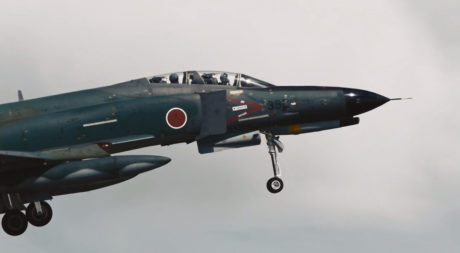 Here’s an outstanding video from one of the world’s last Phatom operators. Although they don’t fly with the USAF anymore, other air arms around the world still operate the F-4 Phantom, including the Islamic Republic of Iran Air Force; the Turkish Air Force, whose F-4s have had a role in the coup attempt last July; […]
Here’s an outstanding video from one of the world’s last Phatom operators. Although they don’t fly with the USAF anymore, other air arms around the world still operate the F-4 Phantom, including the Islamic Republic of Iran Air Force; the Turkish Air Force, whose F-4s have had a role in the coup attempt last July; […]
6 killed after fireworks store goes up in flames in Hunan
Simple SimonI'm surprised this hasn't happened more often - they sell them out of modified shipping containers on the street.
Leica M10: the making of
Simple SimonWould you rather have a second-hand Ford Focus, or one of these?
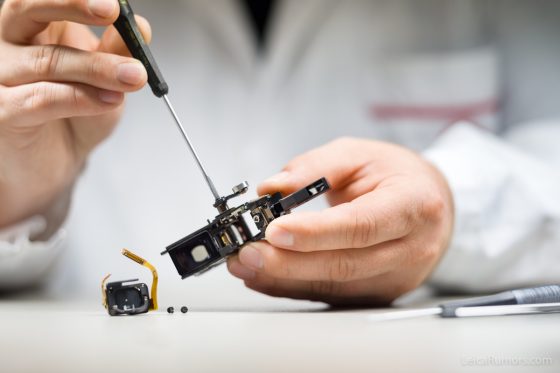
Left: Finder mask with bright-line. Right: Attaching the roller-lever to the rangefinder
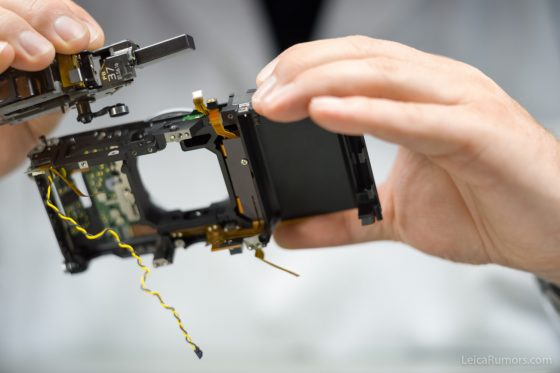
Installing the rangefinder assembly in the main body I
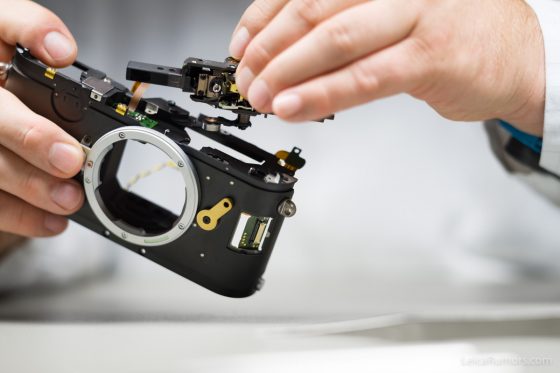
Installing the rangefinder assembly in the main body II
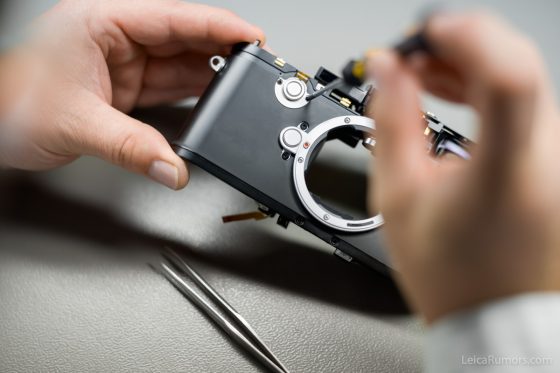
Installing the protection cover of the override button on the main body

Installing the shutter in the main body
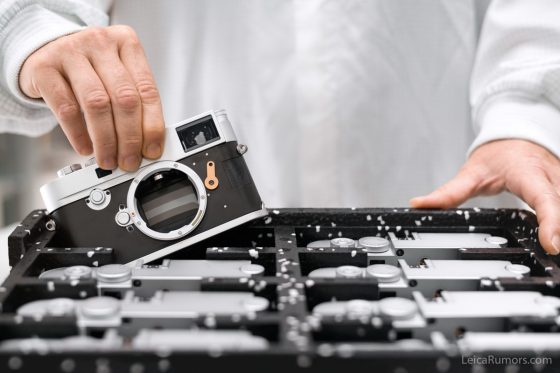
The M10 once again offers an image field selector in order to regulate the bright-frame display in the rangefinder
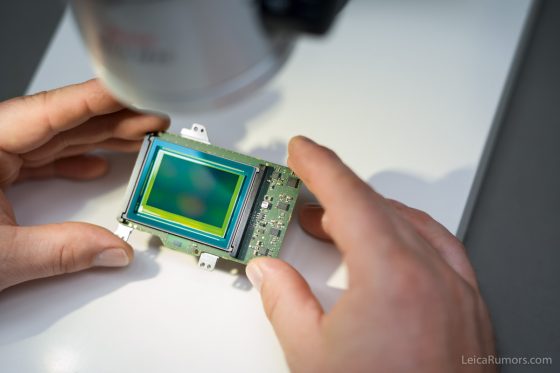
Sensor surface and coating are visually examined for scratches, dust and air pockets
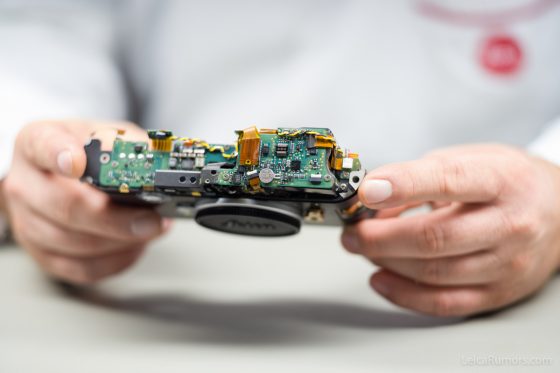
Inspection of the connectors and examination of all screw connections during the assembly of the main body

Installation of the sensor in connection with the image board; the two components have been calibrated to each other
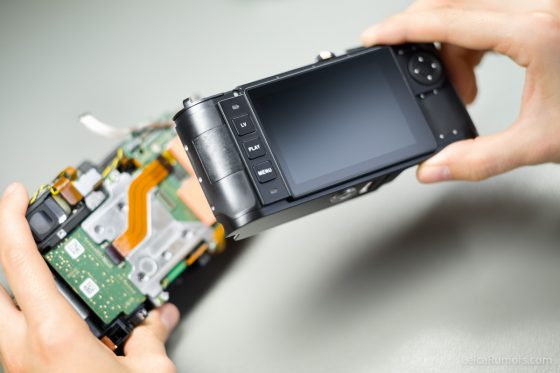
Attaching the back-shell to the previously examined main body
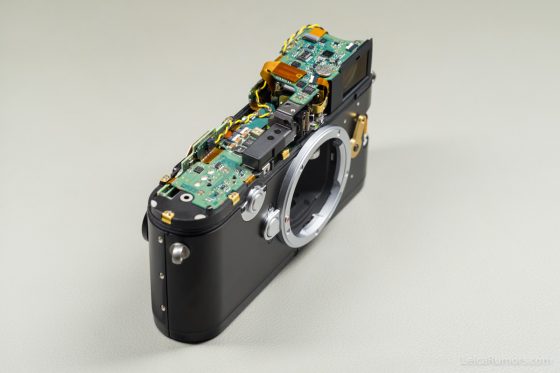
Once the back shell and main body have been joined, only the top plate is missing

Before installing the top plate, the connectors are closed

Having closed the connectors, the top-plate is attached as the final step
Check Leica M10 pre-orders, pricing and availability:
| US | Worldwide |
|
B&H Adorama PopFlash Leica Boutique Palm Beach Leica Store San Francisco Leica Store Miami Tamarkin Classic Connection |
Meister Camera (Germany) Reddotcameras (UK) MKKamera (Hong Kong) Rangefinder (Hong Kong) 9days (Hong Kong) Map Camera (Japan) |
For additional Leica M10 coverage follow the new Leica M10 Facebook group and Leica M10 Facebook page.
Related posts:

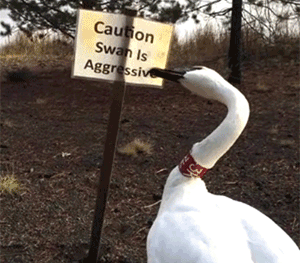
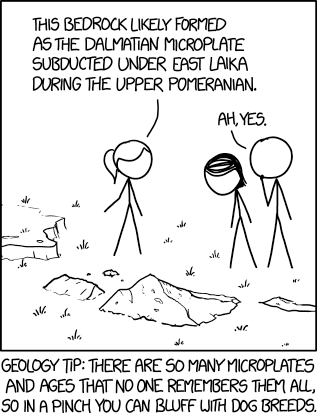



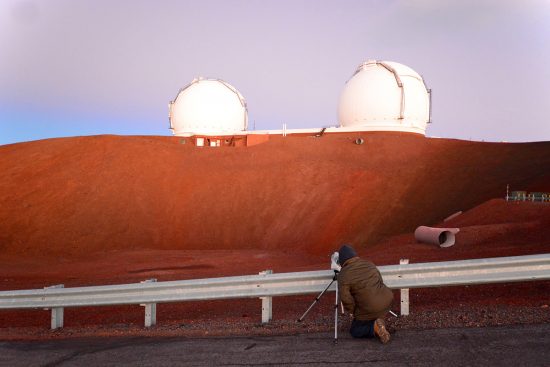
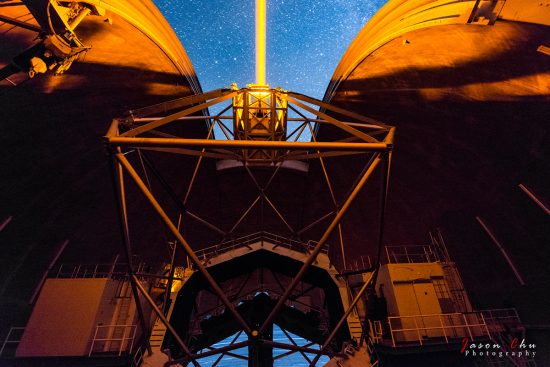
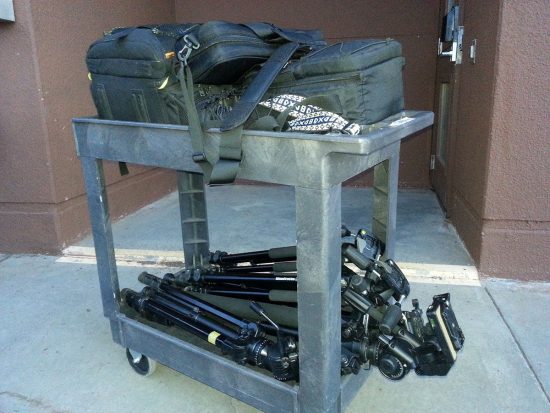
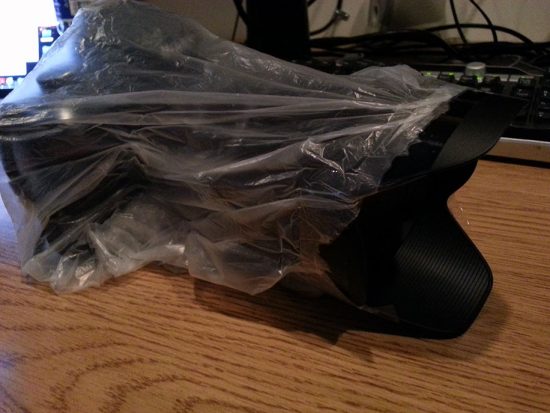

![[*disables social networking accounts*] [*social isolation increases*] Wait, why does this ALSO feel bad? [*disables social networking accounts*] [*social isolation increases*] Wait, why does this ALSO feel bad?](https://imgs.xkcd.com/comics/phone.png)
